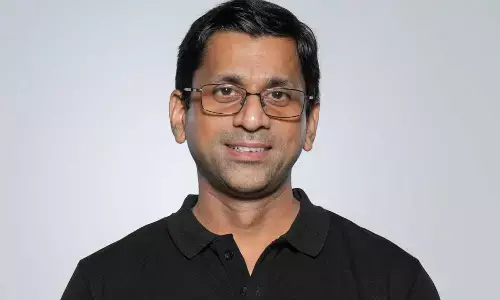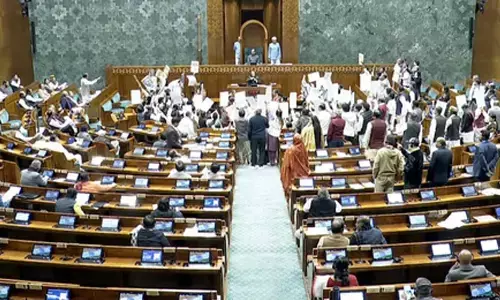AAP far from convincing Muslims

AAP Far From Convincing Muslims. The Aam Aadmi Party has lost no time in following up its runaway victory in Delhi with a declaration of its intention to be a serious contender in the coming Lok Sabha poll.
The Aam Aadmi Party has lost no time in following up its runaway victory in Delhi with a declaration of its intention to be a serious contender in the coming Lok Sabha poll. While instances of meteoric rise of fledging regional groups are many in the country’s electoral annals, the AAP has, set a record of a kind in vying to create a national space for itself. Perhaps, this was an eventuality waiting to happen at a time when mafia rule seemed to have taken hold of different departments of public life—the institutions of the higher judiciary, the science research organisations and the Army being left as islands of probity.
While the AAP has yet a long distance to go to prove its national credentials, the very possibility of its emergence as a national force holds out both a promise and a hope for the afflicted masses. As such, its announcement to extend itself on a wider scale is a welcome development particularly as it would widen the area of choice for the people looking for a national alternative between the two entrenched groupings of the Congress and the BJP. The AAP has a potential of becoming a better credible third force than an amorphous and motley “third front”. The AAP has yet to spell out its overall ideology and approach to have a mass appeal nationwide in its multi-layered complexities.
The AAP rode to success in Delhi on the crest of general disillusionment of the masses and classes in the urban setting of the capital. However, there lie much wider challenges on the national scale and as such the AAP will be called upon to satisfy the aspirations and the expectations of those at the grassroots—more specifically, the weaker sections, the minorities and Dalits. In the case of Delhi, the AAP was able to cause erosion to the extent of 16 per cent in the Congress votes and at least 10 per cent in Mayawati’s BSP.
Encouraging as it was for the AAP, the on-the-ground realities across the country are not that simple. Even otherwise the Congress hold on the Muslims remained intact in the Delhi elections and all its five Muslim candidates emerge successful of its total tally of eight seats, and all the six of the AAP failing to make the grade. The top decision-making body of the AAP has neither any Muslim nor for that matter any Dalit representation worth the name¬¬–notwithstanding the general rush of supporters for the party in many states. As a result, the AAP manifesto dealing with the problems of the Muslims, and the status of Urdu was far from convincing and disingenuously vague.
Indeed, the AAP’s commitment to do away with the VIP culture and its anti-corruption plank have struck sympathetic chords all over. This has been the case with other parties too at least in the initial stages—the Congress and the left parties particularly. Nehru had anti-corruption as his party’s major plank in the first general election in 1952, and JP had raised the issue in a big way during his ‘total revolution’ movement.
As for simple living Bhola Paswan Shastri of the Indira cabinet and Inderjit Gupta, Marxist union home minister in 1990, made do with living in single suites in the Western Court at Delhi. However, these examples cannot obviate the need to root out corruption in the present-day context when everything has come to be weighed in terms of pelf and power: even convicted ministers, chief minister and other high-ups are seen showing ‘V’ sign on TV screens once out on bail.
Many Arabian Nights-like stories can be related about those who fought and made the Indian revolution, the scams began with the advent of the beneficiaries of the revolution, and thanks to the introduction of the Local Area Development Schemes for parliamentarians and the legislators and the never-ending demand for pay and perks apart from the insatiable clamour of the upward mobile political class for getting the VIP status. Lal Bahadur Shastri as well as Indira Gandhi continued living in their lower-grade residences even after becoming prime ministers (the practice of converting government accommodations into memorials was a latter-day phenomenon.
The moving force behind the AAP is indeed Arvind Kejriwal who at 44 is a new arrival in politics as indeed is the case with other bigwigs in the party. It is nonetheless phenomenal that a set of non-politicians should have come to wield political power within such a short span of time so much so that even the Congress icon Rahul Gandhi has urged his grand old party to emulate the ways of a fledgling. Some election surveys, premature as they may be, envisage an important role for the AAP in the post-2014 scenario. Be that as it may, the RSS along with mascot Modi has started having nightmares about Kejriwal, and making the Congress equally restless.
Till very recently the choice for the nation’s leadership seemed confined to a trial of strength between Rahul Gandhi and Narendra Modi in the reckoning of the habitual opinion-makers of the media but are now being forced to recognise the presence of a third alternative too in the field. As such, the tasks before Kejriwal are not going to end at preparing a credible manifesto alone but he would be as much required to come out with a succinct vision of new India that matches with the dreams of the deprived, the under-privileged and the ones denied their due for ages.
Next Story



















